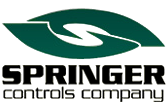 Crane and hoist controls are used to operate the various functions of a crane or hoist, such as raising and lowering the load, moving the load horizontally, and rotating the crane or hoist. Controls can be either manual or electric.
Crane and hoist controls are used to operate the various functions of a crane or hoist, such as raising and lowering the load, moving the load horizontally, and rotating the crane or hoist. Controls can be either manual or electric.
Manual or Electric Hoist Controls: What’s the Difference?
- Manual controls are typically used on smaller cranes and hoists. They typically consist of a series of levers or hand wheels that the operator uses to control the different functions of the crane or hoist.
Electric controls are typically used on larger cranes and hoists. They typically consist of a series of buttons or levers that the operator uses to control the different functions of the crane or hoist. Electric controls can be either pendant-operated or radio-controlled.
- Pendant-operated controls are connected to the crane or hoist by a cable. The operator holds the pendant in their hand and uses the buttons or levers on the pendant to control the crane or hoist. Being wired these can limit mobility but this can also be a safety precaution because the operator must be in a location where the pendant can reach based on the length of the cable, so it can be used to control where the operator must be to operate the crane.
- Radio-controlled controls use radio signals to communicate with the crane or hoist. The operator carries a small transmitter in their hand and uses the buttons or levers on the transmitter to control the crane or hoist. Radio controls allow the operator full mobility to move around the load and position himself in the ideal spot. However, this also allows the operator to move into unsafe locations if they are not aware.
Do You Need to Label Controls?
Labeling the controls for operator clarity is important in making the crane operation safe and efficient. Contrasting colors and indelible indications of the function of the control can help prevent operator error.
The following are some of the most common crane and hoist controls:
- Hoist up/down: Controls the raising and lowering of the load.
- Trolley travel: Controls the horizontal movement of the load.
- Bridge travel: Controls the horizontal movement of the crane itself (on overhead cranes).
- Boom hoist: Controls the raising and lowering of the boom (on mobile cranes).
- Boom swing: Controls the rotation of the boom (on mobile cranes).
- Emergency stop: Controls the immediate stop of all crane or hoist functions.
Operating Crane and Hoist Controls Safely
It is important to operate crane and hoist controls safely to avoid accidents. When operating crane and hoist controls, the operator should always:
- Be aware of their surroundings and be sure that there are no people or obstacles in the path of the load.
- Follow all safety procedures and guidelines.
- Use the controls smoothly and carefully.
- Be aware of the load capacity of the crane or hoist and never exceed it.
- Inspect the crane or hoist and controls before use to ensure that they are in good working order.
Additional Safety Tips
- Always wear proper personal protective equipment (PPE), such as a hard hat, safety glasses, and sturdy footwear.
- Never operate a crane or hoist if you are not qualified to do so.
- Be aware of the wind conditions and avoid operating a crane or hoist in high winds.
- Be aware of the ground conditions and avoid operating a crane or hoist on soft or uneven ground.
Summary: How Do Crane and Hoist Controls Work?
Crane and hoist controls are used to operate the various functions of a crane or hoist. It is important to operate crane and hoist controls safely to avoid accidents. When operating crane and hoist controls, the operator should always be aware of their surroundings, follow all safety procedures and guidelines, and use the controls smoothly and carefully.
To learn more about choosing crane and hoist controls, contact the experts at Springer Controls Company, or if you already know what you need, request a quote today.
